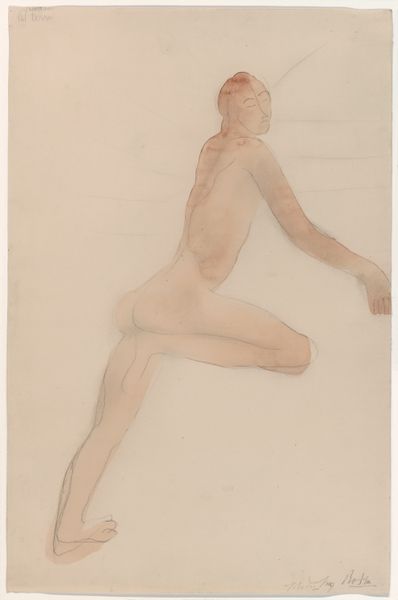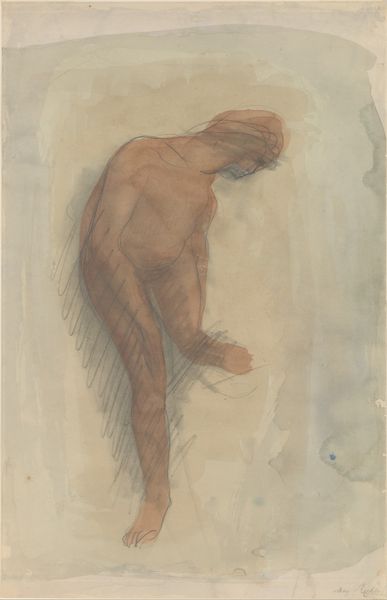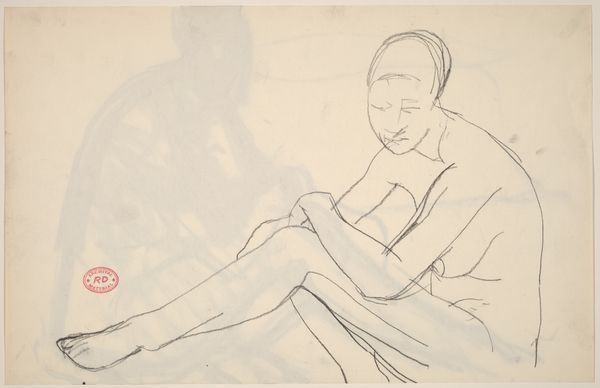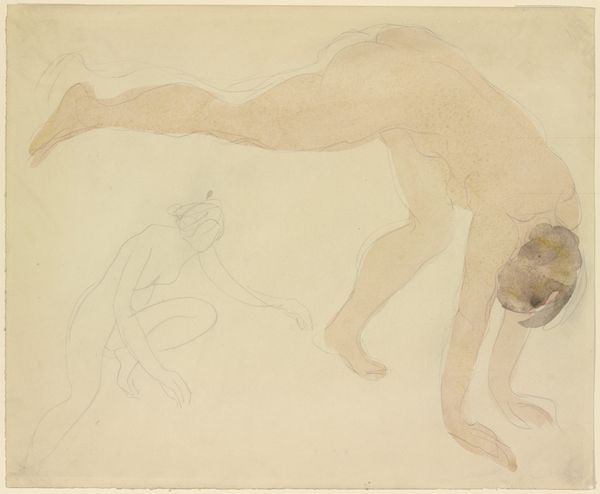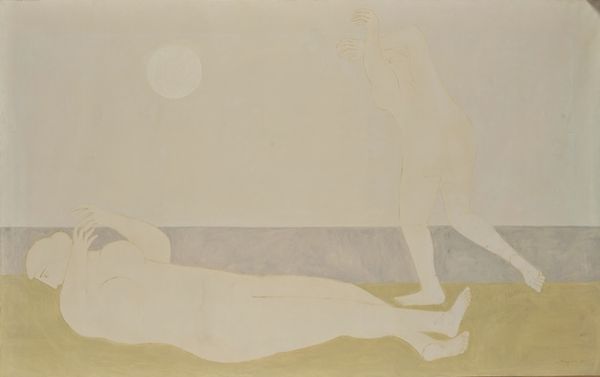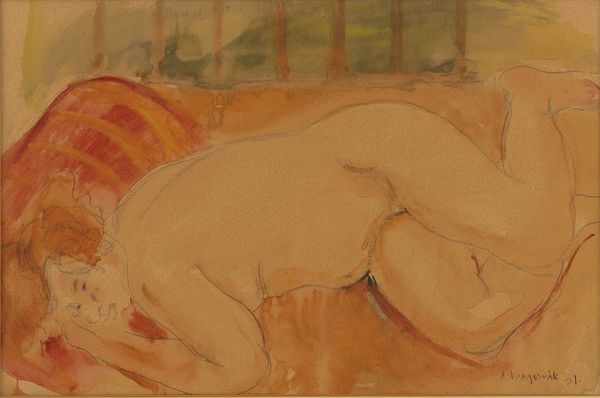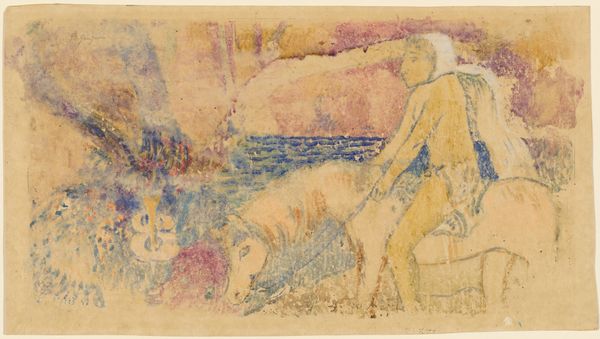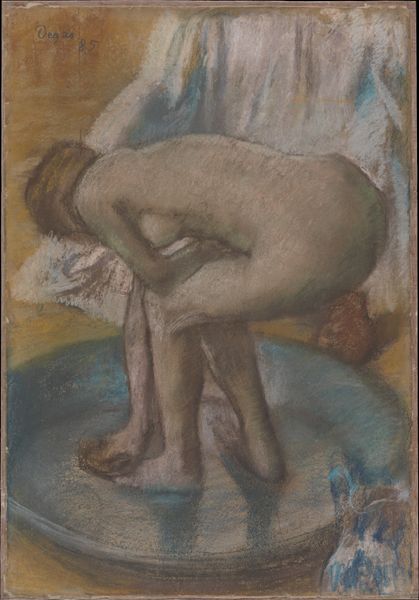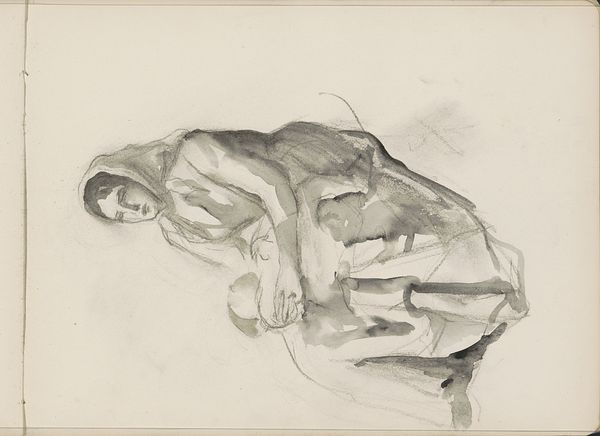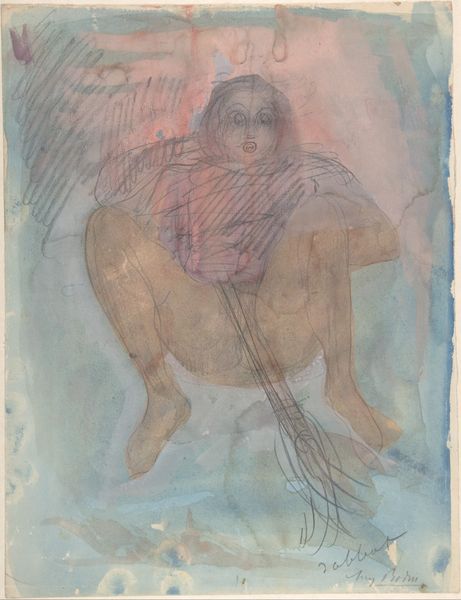
Nude Figure on Hands and Knees (Executioner) 1898 - 1900
0:00
0:00
Dimensions: 9 3/4 x 12 13/16 in. (24.8 x 32.5 cm)
Copyright: Public Domain
Curator: Here we have Auguste Rodin's watercolor and graphite drawing, Nude Figure on Hands and Knees, also known as Executioner, dating from around 1898 to 1900. What's your immediate impression? Editor: Bleak. Frail. There's an incredible vulnerability in that pose. The watery washes create such a fleeting sense of form...it’s almost painful to look at. Curator: It's interesting you pick up on that feeling. Consider Rodin’s intense study of the human form through sculpture. This drawing allows us insight into his process of rapid sketching, of capturing fleeting movements, and it almost reveals an almost brutal understanding of human anatomy stripped down to essentials through the industrial lenses of the era. Editor: Absolutely. But it's more than just anatomical study, isn't it? Look at how the watercolor bleeds. There's a raw, emotional quality to it, even a tenderness in the way the blues pool around the figure's implied base. What does that tell us? The weight on the hands and knees is softened through the use of light almost like it is glowing? Curator: Indeed. The "Executioner" title adds another layer, connecting to broader societal attitudes towards mortality and suffering that are reflective of late 19th century anxieties. The piece invites commentary on class and gender relations within the world. Editor: Yes! And perhaps the title adds to the feeling of being burdened, which in my mind it connects so beautifully and devastatingly through our empathy and into my gut. You mention mortality, do you think we may view it as such due to its lack of clear distinct lines of graphite, therefore connecting it to our very fading existences. It gives one quite the feeling when diving into all the work’s subtle undertones. Curator: A lot to digest and something perhaps Rodin aimed to explore at length. Considering the historical and social backdrop it has. Editor: It definitely leaves me pondering how our current "lines," our materials and contexts today, might shift this visceral impact if someone were to try to recreate it now. Curator: It certainly shows how Rodin’s drawings could function simultaneously as studies, experiments, and powerful expressions of his own evolving artistic vision and societal criticism.
Comments
No comments
Be the first to comment and join the conversation on the ultimate creative platform.
